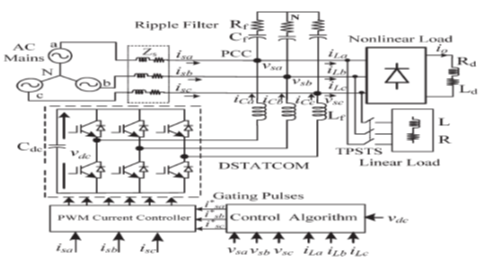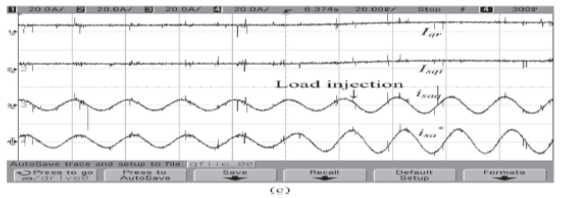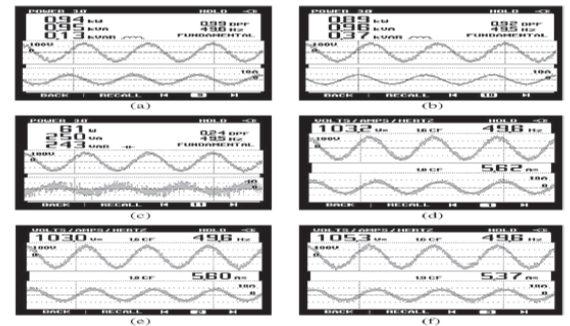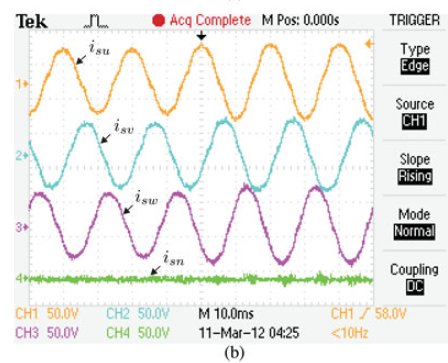Transformer less Inverter with
Virtual DC Bus Concept for Cost-Effective Grid-Connected PV Power Systems
ABSTRACT:
In order to eliminate the common-mode (CM) leakage current
in the transformer less photovoltaic (PV) systems, the concept of the virtual
dc bus is proposed in this paper. By connecting the grid neutral line directly
to the negative pole of the dc bus, the stray capacitance between the PV panels
and the ground is bypassed. As a result, the CM ground leakage current can be suppressed
completely. Meanwhile, the virtual dc bus is created to provide the negative
voltage level for the negative ac grid current generation. Consequently, the
required dc bus voltage is still the same as that of the full-bridge inverter.
Based on this concept, a novel transformer less inverter topology is derived,
in which the virtual dc bus is realized with the switched capacitor technology.
It consists of only five power switches, two capacitors, and a single filter inductor.
Therefore, the power electronics cost can be curtailed. This advanced topology
can be modulated with the uni polar sinusoidal pulse width modulation (SPWM)
and the double frequency SPWM to reduce the output current ripple. As a result,
a smaller filter inductor can be used to reduce the size and magnetic losses.
The advantageous circuit performances of the proposed transformer less topology
are analyzed in detail, with the results verified by a 500-W prototype.
KEYWORDS
1.
Common mode
(CM) current
2.
Photovoltaic (PV) system
3.
Switched capacitor
4.
Transformer less inverter
5.
Unipolar sinusoidal pulse width modulation
(SPWM)
6.
Virtual dc bus.
SOFTWARE: MATLAB/SIMULINK
BLOCK DIAGRAM:
Fig.1.
Proposed topology.
EXPECTED SIMULATION RESULTS:
Fig.2. Output current and grid voltage.
Fig.3.
Current harmonics distribution.

Fig.4.
Simulation waveform for reactive power generation
Fig.5.
Current stress on S3 .
Fig. 6. Enlarged figure for
current stress on S3
Fig. 7. CM current of H5 circuit.
Fig. 8. Current
stress under different capacitor ratios for the proposed circuit: (a) C1
/C2 = 1/2; (b) C1 /C2 = 2/1.
CONCLUSION:
The
concept of the virtual dc bus is proposed to solve the CM current problem for
the transformer less grid-connected PV inverter. By connecting the negative
pole of the dc bus directly to the grid neutral line, the voltage on the stray
PV capacitor is clamped to zero. This eliminates the CM current completely. Meanwhile,
a virtual dc bus is created to provide the negative voltage level. The required
dc voltage is only half of the half bridge solution, while the performance in
eliminating the CM current is better than the full-bridge-based inverters.
Based on this idea, a novel inverter topology is proposed with the virtual dc
bus concept by adopting the switched capacitor technology. It consists of only
five power switches and a single filter inductor. The proposed topology is
especially suitable for the small-power single-phase applications, where the
output current is relatively small so that the extra current stress caused by
the switched capacitor does not cause serious reliability problem for the power
devices and capacitors. With excellent performance in eliminating the CM current,
the virtual dc bus concept provides a promising solution for the transformer less
grid-connected PV inverters.
REFERENCES:
[1]
J. P. Benner and L. Kazmerski, “Photovoltaics gaining greater visibility,” IEEE
Spectr., vol. 36, no. 9, pp. 34–42, Sep. 1999.
[2]
Z. Zhao, M. Xu, Q. Chen, J.-S. Lai, and Y. Cho, “Derivation of boost-buck converter
based high-efficiency robust PV inverter,” in Proc. IEEE Energy Convers.
Cong. Expos., Sep. 12–16, 2010, pp. 1479–1484.
[3]
R.W. Erickson and A. P. Rogers, “A microinverter for building-integrated photovoltaics,”
in Proc. 24th Annu. IEEE Appl. Power Electron. Conf. Expos., Feb.
15–19, 2009, pp. 911–917.
[4]
S. B. Kjaer, J. K. Pedersen, and F. Blaabjerg, “A review of single-phase grid-connected
inverters for photovoltaic modules,” IEEE Trans. Ind. Appl., vol.
41, no. 5, pp. 1292–1306, Sep./Oct. 2005.
[5]
E. Koutroulis and F. Blaabjerg, “Design optimization of grid-connected PV
inverters,” in Proc. 26th Annu. IEEE Appl. Power Electron. Conf. Expos.,
Mar. 6–11, 2011, pp. 691–698.




































